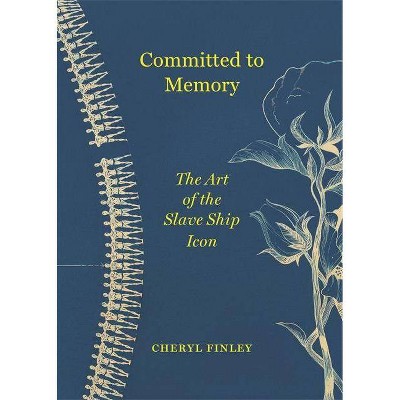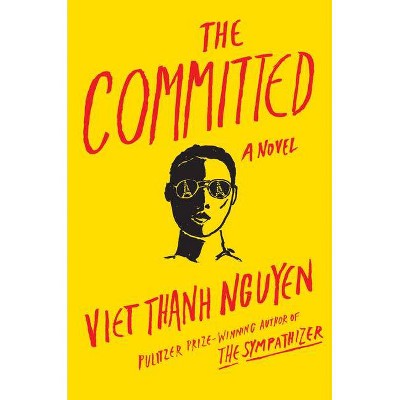Committed to Memory - by Cheryl Finley (Hardcover)

Similar Products
Products of same category from the store
AllProduct info
<p/><br></br><p><b> Book Synopsis </b></p></br></br><p><b>How an eighteenth-century engraving of a slave ship became a cultural icon of black resistance, identity, and remembrance</b> <p/>One of the most iconic images of slavery is a schematic wood engraving depicting the human cargo hold of a slave ship. First published by British abolitionists in 1788, it exposed this widespread commercial practice for what it really was--shocking, immoral, barbaric, unimaginable. Printed as handbills and broadsides, the image Cheryl Finley has termed the slave ship icon was easily reproduced, and by the end of the eighteenth century it was circulating by the tens of thousands around the Atlantic rim. <i>Committed to Memory</i> provides the first in-depth look at how this artifact of the fight against slavery became an enduring symbol of black resistance, identity, and remembrance. <p/>Finley traces how the slave ship icon became a powerful tool in the hands of British and American abolitionists, and how its radical potential was rediscovered in the twentieth century by black artists, activists, writers, filmmakers, and curators. Finley offers provocative new insights into the works of Amiri Baraka, Romare Bearden, Betye Saar, and many others. She demonstrates how the icon was transformed into poetry, literature, visual art, sculpture, performance, and film--and became a medium through which diasporic Africans have reasserted their common identity and memorialized their ancestors. <p/>Beautifully illustrated, <i>Committed to Memory</i> features works from around the world, taking readers from the United States and England to West Africa and the Caribbean. It shows how contemporary black artists and their allies have used this iconic eighteenth-century engraving to reflect on the trauma of slavery and come to terms with its legacy.</p><p/><br></br><p><b> From the Back Cover </b></p></br></br><p> "An original and brilliantly conceived account of how the horrors of the transatlantic trade in human cargo have been visualized in art and culture over more than two centuries. Finley has written a nuanced and provocative book that leaves an imprint on one's mind as indelible as the slave ship icon itself."<b>--Kellie Jones, author of <i>EyeMinded: Living and Writing Contemporary Art</i></b></p><p>"Stimulating and insightful. Finley hones in on the cultural and political strategies that have animated and illustrated the impact of the Atlantic slave trade."<b>--Deborah Willis, author of <i>Posing Beauty: African American Images from the 1890s to the Present</i></b></p><p/><br></br><p><b> Review Quotes </b></p></br></br><br>[<i>Committed to Memory</i> is] a politically attuned chronicling of slave ship representations from the late 18th to present century. . . . Finley has broken new ground in the discipline of art history . . . [a] valuable, clearly-written, well-researched, global aesthetic history of artistic protest, and explicitly black art.<b>---Devon Epiphany Clifton, <i>Make Literary Magazine</i></b><br><br>A Choice Outstanding Academic Title of the Year<br><br>Honorable Mention for the William Sanders Scarborough Prize, Modern Language Association<br><br>Winner of the Historians of British Art Book Prize, 1600-1800<br><br>[<i>Committed to Memory</i>] wonderfully shows how the ship travelled from its 18th-century departure port of protest to multiple destinations - prison reform movements, anti-capitalist campaigns, resistance to racial and sexual discrimination, and refugee advocacy.<b>---Catherine Molineux, <i>Times Higher Education</i></b><br><br>[B]eautifully illustrated and brilliantly conceived . . . [t]his book not only constitutes an innovative, gripping and convincing approach to the narrative of slavery, but it also succeeds in anchoring its heritage in the present moment and casting light on contemporary 'passages.'<b>---Hélène B. Ducros, <i>EuropeNow</i></b><br><br>Published in 1788, the famous engraving of the human cargo of a slave ship was used widely by campaigners for the abolition of slavery. Finley looks at the dissemination of the image in the 18th century and its ongoing political and artistic resonances.-- "Apollo"<br><br>Winner of the Mr. and Mrs. Raymond J. Horowitz Book Prize, Bard Graduate Center<br><p/><br></br><p><b> About the Author </b></p></br></br><b>Cheryl Finley</b> is associate professor of art history at Cornell University. She is the coauthor of <i>Harlem: A Century in Images</i> and the coeditor of <i>Diaspora, Memory, Place: David Hammons, Maria Magdalena Campos-Pons, Pamela Z</i>.
Price History
Price Archive shows prices from various stores, lets you see history and find the cheapest. There is no actual sale on the website. For all support, inquiry and suggestion messagescommunication@pricearchive.us




















